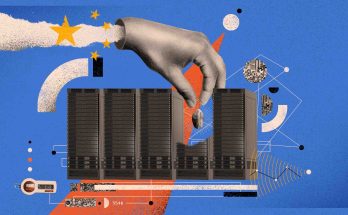China Region Special Section: Big Trends Will Supercomputers Be Super-Data and Super-AI Machines?
Communications of the ACM, November 2018, Vol. 61 No. 11, Pages 82-87
By Yutong Lu, Depei Qian, Haohuan Fu, Wenguang Chen
High-performance computing (HPC) plays an important role in promoting scientific discovery, addressing grand-challenge problems, and promoting social and economic development. Over the past several decades, China has put significant effort into improving its own HPC through a series of key projects under its national research and development program. Development of supercomputing systems has advanced parallel applications in various fields in China, along with related software and hardware technology, and helped advance China’s technological innovation and social development.
To meet the requirements of multidisciplinary and multidomain applications, new challenges in architecture, system software, and application technologies must be addressed to help develop next-generation exascale supercomputing systems.
Supercomputer Development in China
The first supercomputer developed in China was Yinhe-I in 1983, with 1MFlops peak performance, by the National University of Defense Technology (NUDT). China has since continued its supercomputer development.
Three major teams in China—Tianhe, Sunway, and Sugon, like IBM, Cray, and Intel in the U.S.—have developed a series of domestic supercomputing systems, including Dawning 4000A (2005, 11.2TFlops); Tianhe-1A (2011, 4.7PFlops, number one in the TOP500); Sunway BlueLight (2011, 1PFlops); Tianhe-2 (2013, number one in the TOP500 six times); and Sunway TaihuLight (2016, number one in the TOP500 four times). Chinese supercomputers have adapted multiple architectures, including vector, SMP, ccNUMA, MPP, cluster, heterogeneous-accelerated, and many-core. Their developers have thus acquired rich knowledge of supercomputing hardware and software and trained a large number of engineers along the way.
In the years since the Yinhe-1 system in 1983, China has achieved the leading position in supercomputer development worldwide. For example, Tianhe-2 and Sunway TaihuLight held the top position in the TOP500 from 2013 to 2017. At the same time, the number of HPC systems in China increased dramatically, exceeding the number of HPC systems in the U.S., as of the June 2018 TOP500 ranking. And Chinese HPC manufacturers Lenovo, Sugon, Inspur, and others have claimed significant shares of the market for HPC systems and high-end servers.






